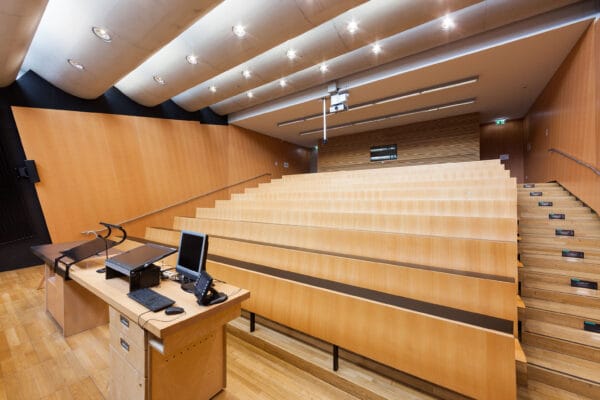
NAME:
SOWI - HS 2
BUILDING:
SOWI
FLOOR:
0
TYPE:
Lecture Hall
CAPACITY:
80
ACCESS:
Only Participants
EQUIPMENT:
Beamer, PC, WLAN (Eduroam), Overhead, Flipchart, Blackboard, Sound System, Handicapped Accessible, Light Installation
Bioaerosols are an integral and ubiquitous component of the atmospheric aerosol. Despite this, they have received little attention in the atmospheric sciences for many years. Recently, however, interest in bioaerosols has been stimulated by growing evidence that bioaerosols are not only a health concern, but may also play an important role in cloud formation. At the same time, automated and on-line instrumentation for bioaerosol research has emerged, promising new insights into the abundance and distribution patterns of bioaerosols by providing higher time resolution and less labor-intensive measurements. In particular, measurements at a mountain station in atmospheric regions where clouds form are rare.
At the Sonnblick Observatory we have installed a SwisensPoleno Jupiter next to a traditional Hirst-type pollen trap since April 2023. The SwisensPoleno Jupiter is an online aerosol monitor that obtains scattered light, two holographic images and fluorescence signals of individual aerosol particles. Using the Hirst pollen trap, particles are collected on a sticky tape and later manually examined under a microscope to visually identify pollen and fungal spores. This data is used to validate the automatic measurements.
In this presentation we will focus our discussion on selected time periods where FLEXPART simulations indicate long-range transport of air masses, e.g. from the Saharan region. For these periods, we have taken a closer look at the fluorescence properties of the particles together with the holographic images. In a previous laboratory study, we obtained representative fluorescence signals for three classes of bioaerosol particles: pollen, fungal spores and plant debris. We use these data in combination with pollen and spore counts from the Hirst trap to characterize the selected events and to contrast and compare them with periods of stagnant conditions and stronger local influence.

We and use cookies and other tracking technologies to improve your experience on our website. We may store and/or access information on a device and process personal data, such as your IP address and browsing data, for personalised advertising and content, advertising and content measurement, audience research and services development. Additionally, we may utilize precise geolocation data and identification through device scanning.
Please note that your consent will be valid across all our subdomains. You can change or withdraw your consent at any time by clicking the “Consent Preferences” button at the bottom of your screen. We respect your choices and are committed to providing you with a transparent and secure browsing experience.